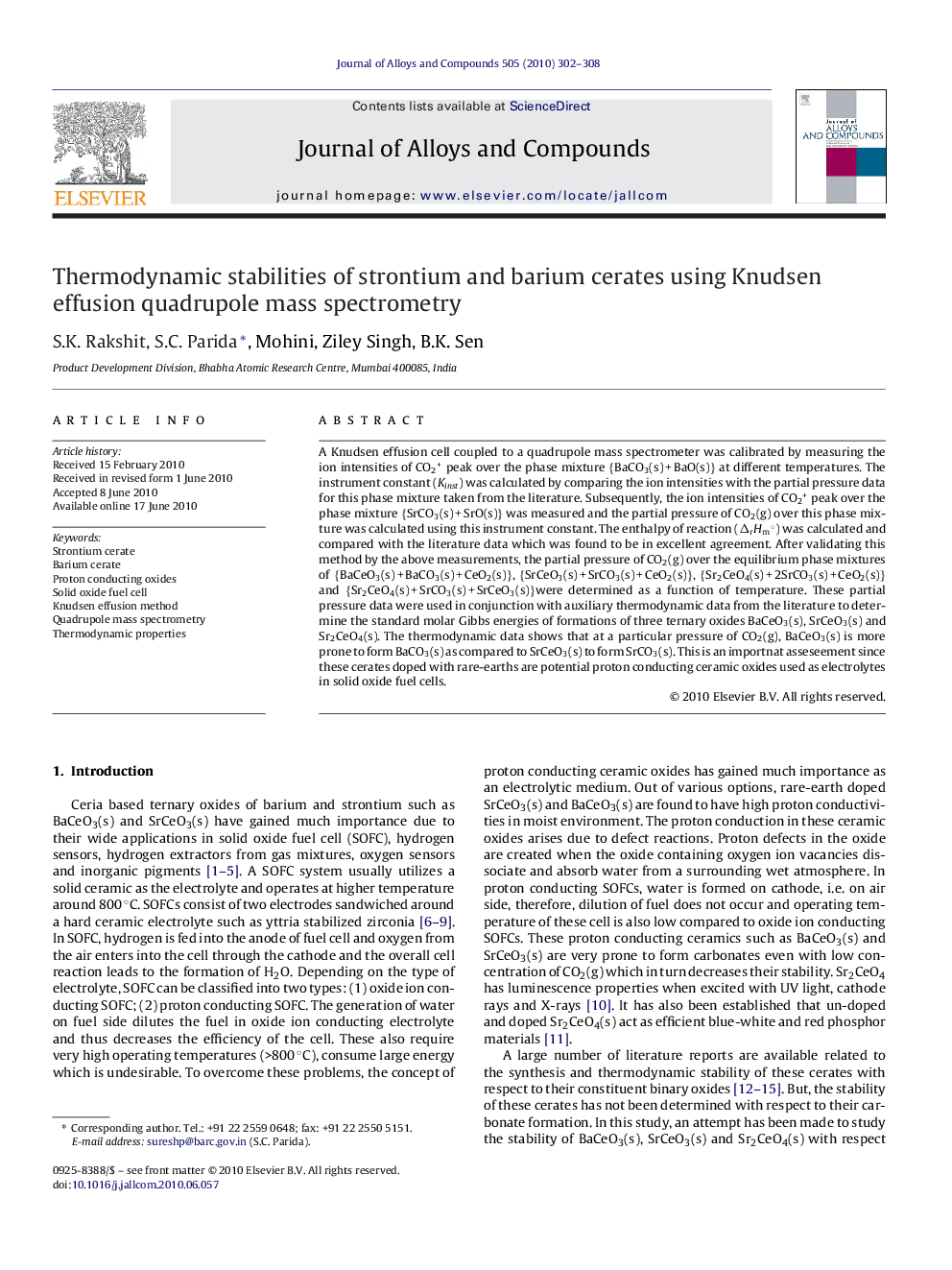| Article ID | Journal | Published Year | Pages | File Type |
|---|---|---|---|---|
| 1618971 | Journal of Alloys and Compounds | 2010 | 7 Pages |
A Knudsen effusion cell coupled to a quadrupole mass spectrometer was calibrated by measuring the ion intensities of CO2+ peak over the phase mixture {BaCO3(s) + BaO(s)} at different temperatures. The instrument constant (Kinst) was calculated by comparing the ion intensities with the partial pressure data for this phase mixture taken from the literature. Subsequently, the ion intensities of CO2+ peak over the phase mixture {SrCO3(s) + SrO(s)} was measured and the partial pressure of CO2(g) over this phase mixture was calculated using this instrument constant. The enthalpy of reaction (ΔrHm°) was calculated and compared with the literature data which was found to be in excellent agreement. After validating this method by the above measurements, the partial pressure of CO2(g) over the equilibrium phase mixtures of {BaCeO3(s) + BaCO3(s) + CeO2(s)}, {SrCeO3(s) + SrCO3(s) + CeO2(s)}, {Sr2CeO4(s) + 2SrCO3(s) + CeO2(s)} and {Sr2CeO4(s) + SrCO3(s) + SrCeO3(s)}were determined as a function of temperature. These partial pressure data were used in conjunction with auxiliary thermodynamic data from the literature to determine the standard molar Gibbs energies of formations of three ternary oxides BaCeO3(s), SrCeO3(s) and Sr2CeO4(s). The thermodynamic data shows that at a particular pressure of CO2(g), BaCeO3(s) is more prone to form BaCO3(s) as compared to SrCeO3(s) to form SrCO3(s). This is an importnat asseseement since these cerates doped with rare-earths are potential proton conducting ceramic oxides used as electrolytes in solid oxide fuel cells.
